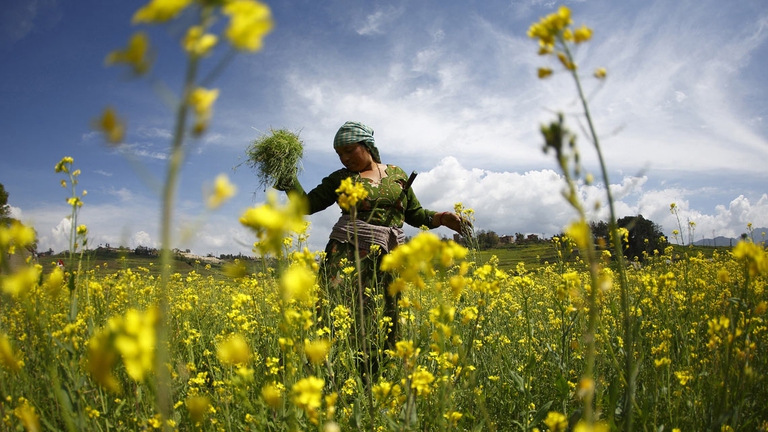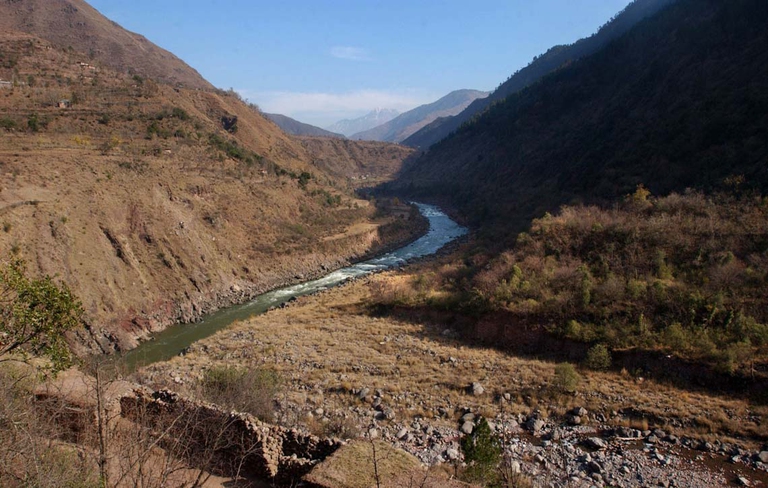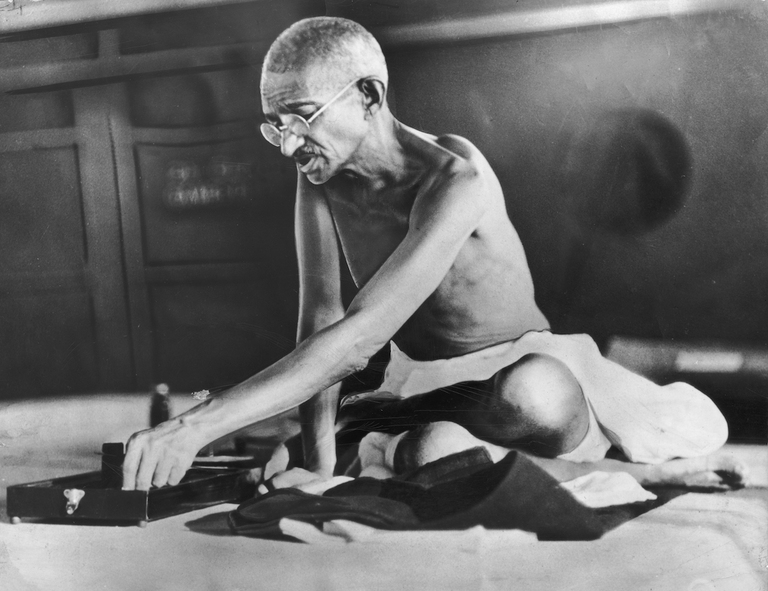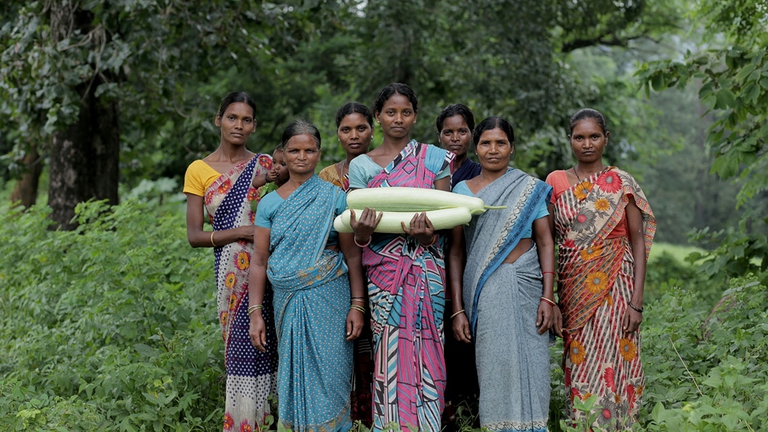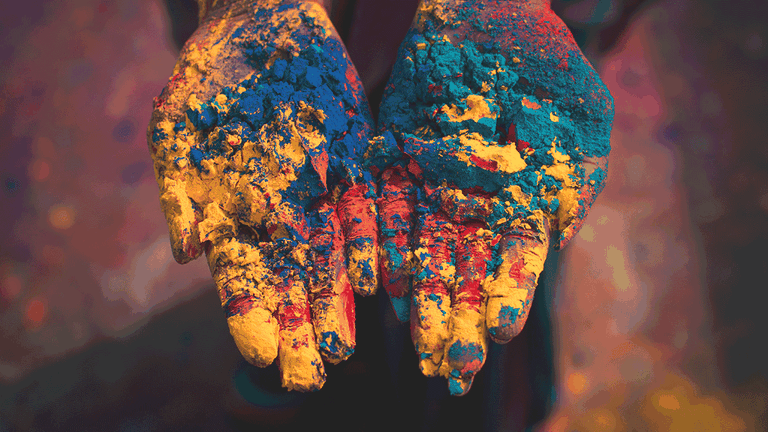
Workers in tea gardens of West Bengal, India, that produces Ctc tea for domestic consumption complain that they have been devoid of basic facilities while political parties make hollow promises during every elections which are never fulfilled.
Diversity is the Hindustan way. India’s civilisation is based on diversity and interconnectedness in nature and culture. We grow gardens of diversity. We weave garlands of love. Our national anthem is an ode to the diversity of the land, from the mountains of the Himalaya to the Vindhayachal range, from the mighty Yamuna and Ganga to the oceans. We sing
Diversity is the Hindustan way. India’s civilisation is based on diversity and interconnectedness in nature and culture. We grow gardens of diversity. We weave garlands of love. Our national anthem is an ode to the diversity of the land, from the mountains of the Himalaya to the Vindhayachal range, from the mighty Yamuna and Ganga to the oceans. We sing how diversity of cultures and religions came to India from the East and West.
We are of the Earth, in our diversity. The Earth gives us citizenship. Our first identity is as Earth citizens, an Earth family (Vasudhaiva Kutumbakam), sharing the planet with other species. We didn’t impose on ourselves the burden of Anthropocentrism, of separation from and superiority over other species. The “empire” was based on the illusion of the superiority of one species, one race, one religion, one gender. It was also an empire over what were declared to be “lesser creatures”, to be exploited and exterminated. The monoculture of the mind is the basis of empire. Separation is the basis of empire. Fragmenting and fracturing interconnected, autopoietic, self organised systems is the basis of empire. Denial of completeness is rupture of relationships that sustain individuals in community, farmers and their land, humans and the Earth. Division is the ground for extractivism. Extractivism is the foundation of empire.
Read more: India, holy rivers Ganga and Yamuna granted same legal rights as a person
There has been a continuous war against our biodiversity in nature and culture diversity by past and present empires. The extractive economy of the 1 per cent is based on the monoculture of the mind and it creates monocultures. The biodiversity of our forests and farms has been replaced by monocultures of commercial timber and commodity crops. The forest is reduced to a mine for timber and pulp. The biodiversity of our farms has been reduced to monocultures of commodities which are desertifying the soil, impoverishing our farmers, and spreading hunger and malnutrition. Tribals rise. Peasants rise. The 1 per cent then uses the tried and tested policies of “divide and rule” to rupture and tear apart the rich weave of our cultural diversity to defend the empire.
The British Empire was established by the East India Company, chartered in 1600, to conquer and colonise India through military force, and take over of our resources, economy and trade. From accounting for 25 per cent of the global economy, we were reduced to 2 per cent by the time the British left. Our generous land was ridden by famines and impoverishment of the people. The atrocities and exploitation of the Company Raj (Company Rule) led to the uprising of 1857, India’s first independence movement, which ended the rule of the first corporation, the East India Company. We could drive out the East India company because we were united for freedom and justice in our diversity.
The memorial of martyrs of the 1857 war of independence at Meerut which I visited during our “Freedom Pilgrimage” to commemorate 100 years of the Champaran Satyagraha, shows how Muslims and Hindus gave their lives for India’s freedom. As, Shashi Tharoor writes in the Era of Darkness “the sight of Hindu and Muslim soldiers rebelling together in 1857 and fighting side by side, willing to rally under the command of each other and pledge joint allegiance to the enfeebled Moghul monarch had alarmed the British who did not take long to conclude that dividing two groups and pitting them against one another was the most effective way to ensure the unchallenged continuance of empire. Lord Elphistone, the Governor of Bombay advised London that “Divide et Impera” was the old Roman maxim and it should be ours”.
The cultural technologies of “divide and rule” are part of the violence that empires use to maintain their rule in times of dissent and resistance. Partitions, compulsory registration on the basis of religion and race, and using the census to construct artificial, fragmented, negative identities are at the core of the arsenal to hold on to power.
India’s movements against imperialism continued after 1857, and were strongest in Bengal. In 1905 the British viceroy in India, Lord Curzon, divided Bengal on the basis of religion to strangle the intensifying nationalist movement, and implement the empire’s divide and rule policies, the nationalist movement protested against the partition of Bengal through Swadeshi (self making and autonomous) and boycott of the import of British goods. This is how Swadeshi was born as the nationalist movement against economic imperialism and its divisive policies.
Read more: Kashmir, what you need to know about the India-Pakistan conflict with no peace in sight
India’s very tragic partition into Pakistan and India built on the earlier division of Bengal and a result of the divide and rule policy of the empire. Around the same time as the partition of Bengal, the empire was dividing South Africa on the basis of race. After the Boer war, when Transvaal became part of the empire, the government passed an Asiatic ordinance on 22 August, 1906.
As Gandhi writes in his book ‘Satyagraha in South Africa’, “I saw nothing in it but hatred of Indians. It seemed to me that if the ordinance was accepted, it would spell absolute ruin for the Indians of South Africa…better die than submit to such a law”. The ordinance required that every man, woman or child of eight years or upwards, entitled to reside in the Transvaal, must register his or her name with the Registrar of Asiatics and take out a certificate of registration. Indians who failed to apply for registration forfeited their right to residence and could be sent to prison or deported. Indians were required to produce the certificate of registration for police officers whenever and wherever required. Failure to show the certificate could send you to prison. Police officers could enter private houses in order to inspect certificates.
Hindus and Muslims in South Africa joined hands to fight the laws for compulsory registration which were called the Black Act. They refused to register. After 8 years of non cooperation, the empire had to withdraw the restrictions. The South African Satyagraha against the race based compulsory registration of Indians was Gandhi’s first Satyagraha. Gandhi’s ideas of freedom through Swaraj and Satyagraha were shaped by the struggles in South Africa.
But the urge of the empire to divide and rule continued. It was institutionalised as the apartheid regime in 1948. The Africaans word, apartheid, meaning “separateness” or the state of being apart was first articulated in 1929. Nelson Mandela and others who fought against apartheid were imprisoned for decades. Thousands died. The apartheid system was abolished in 1994.
The world celebrated the end of apartheid as the beginning of a new age of our consciousness as one humanity, with no place for race-based and religion-based separation and division. However, the empires tools of apartheid and separation keep coming back in new forms. And anti-apartheid struggles which celebrate diversity also emerge in each age and every place where diversity is threatened.
The spirit of human freedom, in and through diversity, can’t be extinguished in spite of repeated, brutal attempts to destroy freedom and diversity. Divide and rule policies of the British Empire included the attempts to change the census from one based on occupation and place, which creates positive and real identities, to one based on artificial constructions of fixed and mutually exclusive caste and religious identities, and then dividing people on the basis of these constructions, violently removing the shared identity of culture, community, place.
It is not that India had not undertaken enumerations of the population before the British. But these enumerations, like Ain-i Akbari, took relationships and diversity into account. The empire used the census to construct essentialised, polarised, artificial religious identities. As a government resolution stated: “the basis of the classification should be religion”. The mutually exclusive antagonistic categories of Hindu (referred to as “Gentoo”) and Muslim (referred to as “mussalman”) are constructs of empire. People had multiple identities, and religion was not the most dominant at the social level. Identities of occupation were dominant. They would put ‘mali’ (gardner), not muslim. People often saw themselves as Hindu Muslim, because Hindu merely referred to a geographical indicator – the people of the land beyond the Indus. Hindus and Muslims prayed at the same shrines. “The Satya Narain of the Hindu is the Satya Pir of the Bengali Musalman”. Bengali muslims used the same language, dressed the same way. And diversity is India’s being. A diversity so rich that no box, no standardised category, no monoculture, can contain it. Every attempt at forcing it into a box has involved violence, and failure.
The consequences of this reduction of diverse, multiple, shared, positive identities, into negatively constructed, reductionist, religious identities are at the root of much violence in our times. It is part of the divide and rule strategy of today’s empire.
Oneness is based on the consciousness that we are interconnected, we are interbeings, ecologically and culturally. When we do pranayama we say “So Hum”: you are, therefore I am. There is no “other”.
Instead of identity flowing positively from who we are, the work we do, the place we live in and spaces we occupy, the relationships we nurture and which nurture us, Empire destroys our work, uproots us from our homes making us all refugees, tears apart our relationships and actual identities, and fills the vacuum by negative, fragmented, cultural identities constructed and externally imposed by empire. The externally defined and imposed identities of empire are negative, defined not by who we are but who we are not.
The empire of the 1 per cent destroys identity and meaning that flow from work and place, dividing societies and manufacturing enemies, to divide and rule everything, everywhere. As Samuel Huntington wrote: “I can’t know who I am till I know who I hate”. The empire is defined by who our enemy is. We witness this today with the threat of a war against Iran, and the continued wars in Iraq and Syria. We see it with Facebook and Cambridge Analytica becoming the machinery of the manufacture and unaccountable dissemination of hate to hijack democracy in a digital world. The currency and commodity of the empire is hate.
In these times of limitless greed and manufactured division and hate, we resist by living and thinking through, and with, our diversities as one humanity on one planet. We grow gardens of diversity. We weave garlands of love.
Siamo anche su WhatsApp. Segui il canale ufficiale LifeGate per restare aggiornata, aggiornato sulle ultime notizie e sulle nostre attività.
![]()
Quest'opera è distribuita con Licenza Creative Commons Attribuzione - Non commerciale - Non opere derivate 4.0 Internazionale.
Workers in tea gardens of West Bengal, India, that produces Ctc tea for domestic consumption complain that they have been devoid of basic facilities while political parties make hollow promises during every elections which are never fulfilled.
India is in the middle of the elections, but sadly none of the politicians have uttered a word on man-animal conflict that has been devouring several lives every year.
Manipur, a state in north-east India, is still reeling under the tremors of violence that broke out last year devouring lives and paralyzing the economy.
The government of Tanzania is currently planning to evict more than 80.000 indigenous Maasai people from their ancenstral land
A new UNU-INWEH report on the global bottled water industry reveals the massive scale of this market and the lack of strict quality controls.
Isatou Ceesay founded a social enterprise that is helping to fight plastic pollution and empowering women and young people to gain economic independence.
In 2020, Mihela Hladin made a radical decision that many, in recent times, have probably considered. This is her story, with photos by Matt Audiffret.
The Brazilian government has started evicting illegal gold miners, responsible for the health emergency that has hit the Yanomami people.
Asur culture and tradition in West Bengal are on the brink of extinction due to age-old religious stigma and the apathy of the state government.
